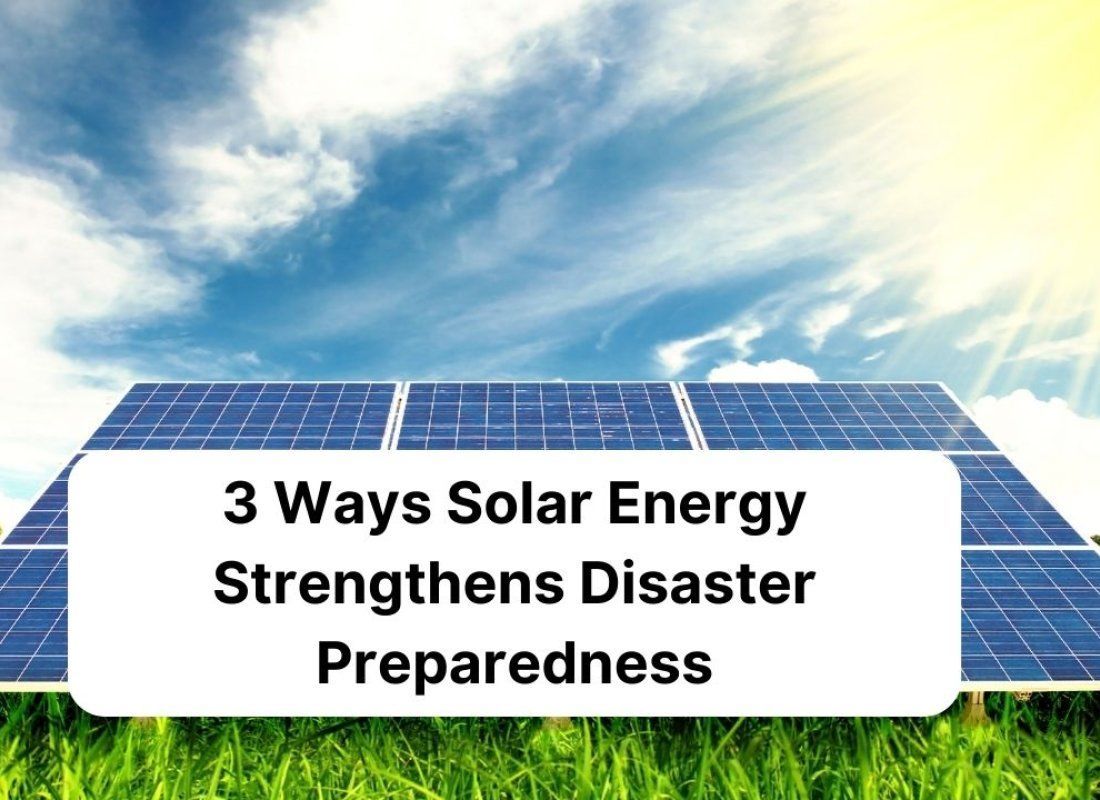
Disaster preparedness is crucial to ensuring the safety and security of our homes and communities. One key component of disaster preparedness is having a reliable energy source during emergencies, such as power outages caused by natural disasters. Solar energy offers a sustainable and resilient solution for energy independence and security during disasters. In this blog post, we will explore three ways solar energy can strengthen your disaster preparedness and resilience.
Ensuring Energy Independence During Power Outages
During disasters, power outages can disrupt essential services and leave homes in darkness.
Installing solar panels in your home offers a strong solution to this problem. When combined with battery storage systems,
solar panels make your home self-sufficient and less vulnerable to grid failures. This setup not only captures sunlight to generate electricity but also stores excess energy for use at night or on cloudy days, ensuring a continuous power supply.
Being independent of the traditional power grid is especially important during emergencies. It means critical appliances, like refrigerators that keep food safe, and medical equipment necessary for health, will keep functioning. Additionally, solar energy can power communication devices, allowing you to stay connected, receive updates, and seek help if needed.
Transitioning to solar energy before a disaster is also a proactive step toward sustainability. It reduces reliance on fossil fuels, which can be disrupted during crises. By choosing solar energy, you prepare your home for unexpected power outages and contribute to environmental stewardship.
Providing Critical Power to Emergency Systems
In a disaster, the functionality of emergency systems is crucial. These systems—ranging from lights guiding evacuees to safety, communication networks connecting us to the outside world, and medical equipment sustaining lives—are the backbone of any effective emergency response. Solar energy plays a key role in keeping these systems operational when they’re needed most.
By integrating solar panels and
battery storage into emergency infrastructure, facilities like hospitals, shelters, and response units can maintain critical operations without interruption. This reliable power source is particularly vital in areas prone to natural disasters, where traditional energy grids are vulnerable to damage. Solar energy offers a quick-to-deploy, renewable power source that can keep essential services running without relying on potentially disrupted fuel supply chains.
Additionally, solar-powered charging stations can ensure communication devices remain functional, aiding coordination among emergency responders and allowing affected individuals to stay in touch with loved ones. These stations can also power lighting in shelters and other critical areas, providing safety and comfort during crises.
The adaptability of solar energy systems means they can be installed in a variety of settings, including remote or hard-to-reach areas, ensuring no community is left in darkness. Strengthening emergency systems with solar power enhances disaster response efforts, ultimately saving lives and reducing the chaos caused by power outages.
Contributing to Community Resilience
Solar energy plays a crucial role in strengthening community resilience, particularly after disasters. By enabling decentralized energy generation, communities can quickly restore electricity and essential services. Solar-powered microgrids are a key example of this resilience, acting as dependable energy hubs that help communities recover swiftly from disruptions. These microgrids not only provide a reliable electricity supply but also support emergency services and critical infrastructure, boosting the community’s overall recovery efforts.
Investing in solar infrastructure leads to a more self-reliant and sustainable energy future. Communities that embrace solar solutions can reduce their dependence on centralized power systems, which are often compromised during natural disasters. This transition to renewable energy like solar also promotes environmental sustainability and lowers the carbon footprint associated with traditional energy sources.
Additionally, solar energy initiatives can strengthen community bonds and foster a culture of preparedness. Projects like community solar encourage collective investment in renewable energy, creating a shared sense of responsibility and cooperation among residents. These initiatives not only enhance local energy resilience but also promote community engagement and education on disaster preparedness and sustainability.
Prepare With Solar Energy with Vesta Home Energy
For those looking to integrate solar energy into their emergency preparedness plans, Vesta Home Energy is a trusted partner. Vesta Home Energy offers advanced solar energy systems providing homes and communities with the tools they need for greater security and sustainability during emergencies. Get in touch with us today to make sure your disaster preparedness is at its best!


